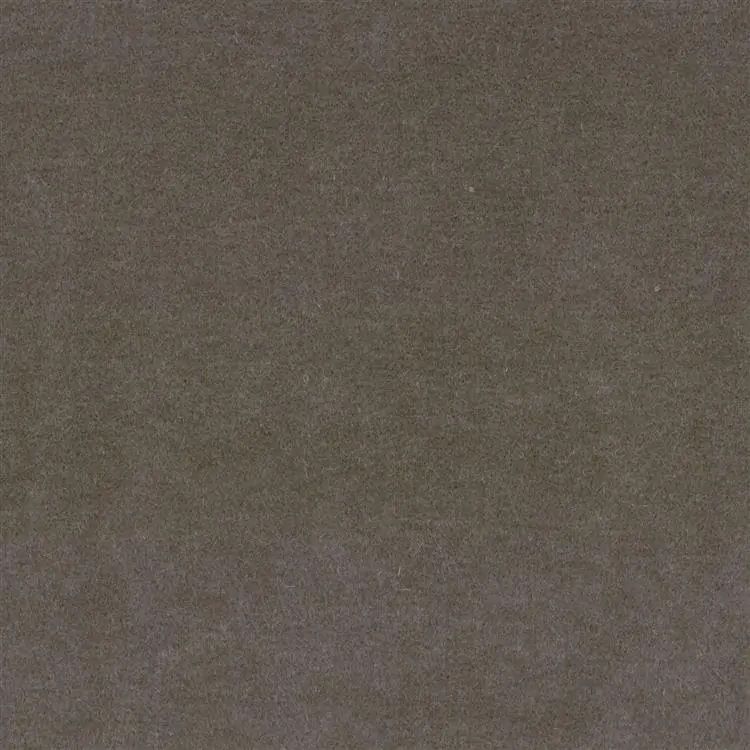

LINCOLN
Velvet, also called velour, plush or velveteen, is a fabric associated with elegance and luxury. Being soft and extremely pleasant to the touch, velvet endows the interior with an elegant style and lends it a pinch of extravagance. Used in small accessories or furniture – velvet always brings a an air of completely new quality.
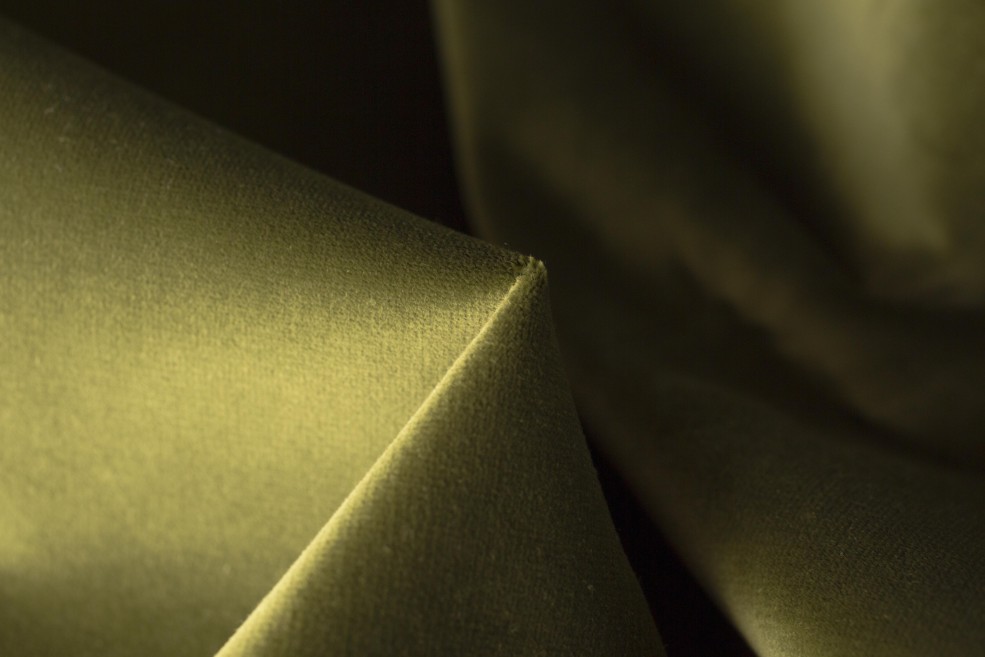
These royal fabrics have a rich history. Velvet is the technique of weaving a fabric, not the fibre itself. Invented most likely in India, it was initially used to make ceremonial outfits for rulers, aristocrats and clergy. Since the Middle Ages, it has also been used to produce curtains and furniture upholstery. To this day, it still serves as a luxurious decorative and upholstery fabric. It is equally suitable for draperies, curtains or pillows, as well as for chaise longues or chairs.
Thick and dense, it consists of two layers: a cotton base and a slightly shiny fleece with soft and delicate pile, extremely pleasant to the touch.
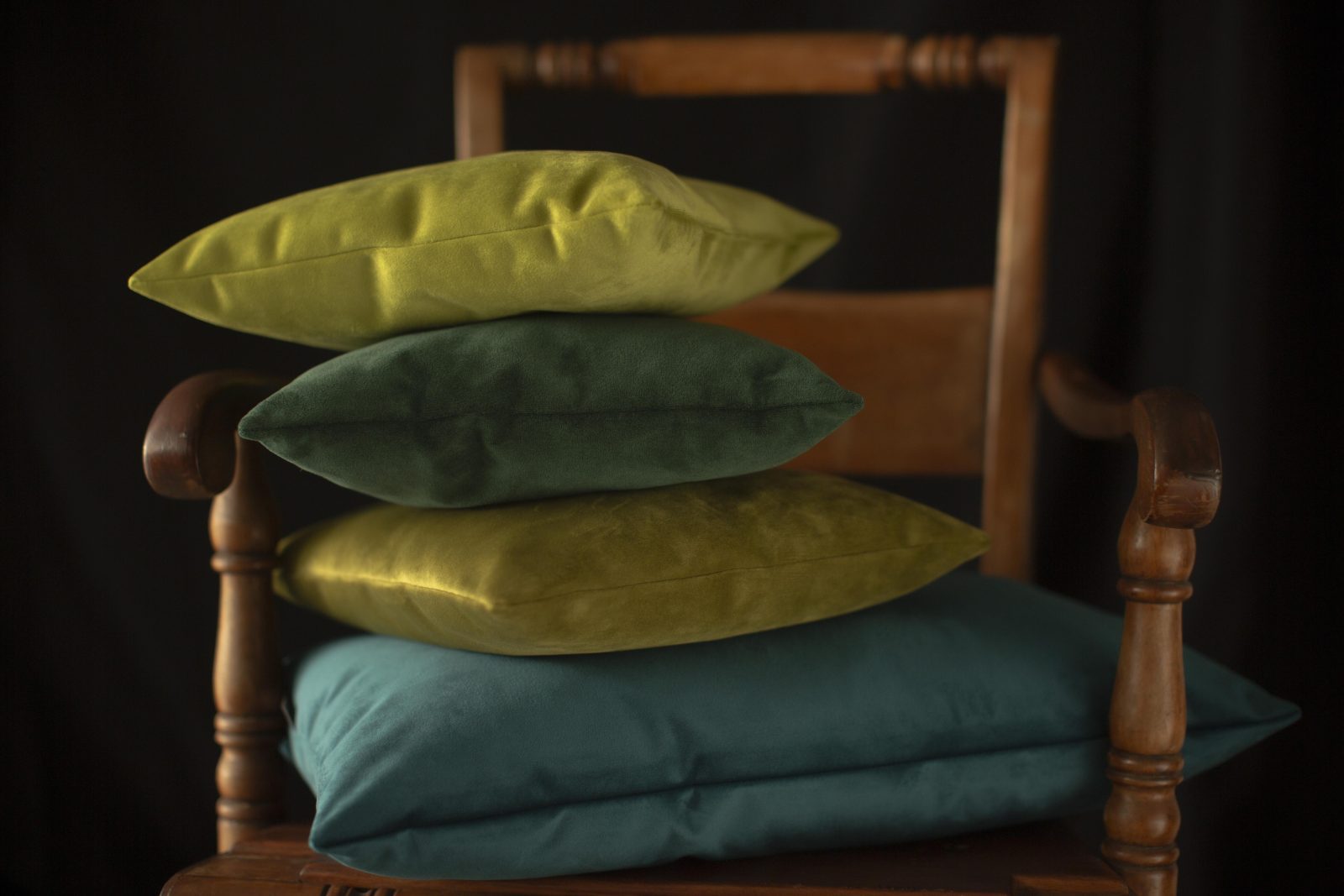
Due to the characteristic way of weaving, the fabric – illuminated from different angles – reflects the light and thus delights with the gloss accentuating its arrangement.
Loops made of cut or uncut threads are woven between the interlaced base threads, i.e. weft and warp. As a result, instead of two threads as in other fabrics, velvet has four additional threads forming the pile. So, the origin of the Polish word “aksamit” (velvet) is not surprising, as it derives from the ancient Greek word “hexamitos”, meaning literally “consisting of six threads”.
Several types of this fabric can be distinguished according to the threads used to create the velvet pile. Traditionally, natural velvets are produced and used, i.e. those made from cotton, silk or wool fibres.
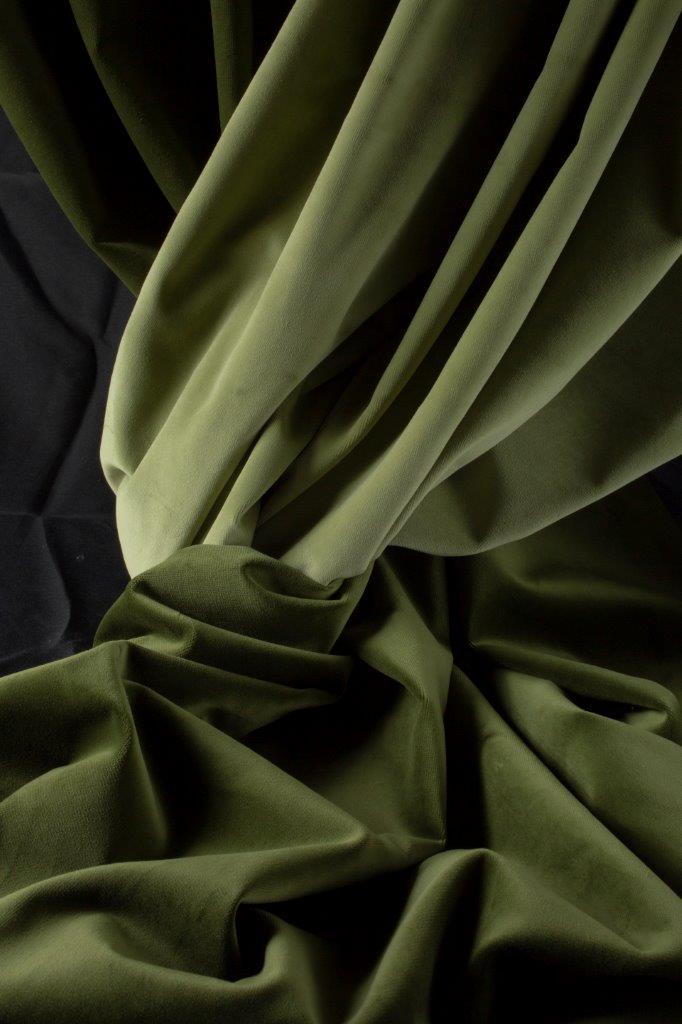
Nowadays, synthetic fibres are also used to produce velvet, resulting in more elastic fabrics, such as polyester velvet, often enriched with spandex.
Patterns in velvet are obtained primarily through patterned weaving (jacquard), contrasting the height of the pile, combining pile-covered surfaces with loops, as well as crushing, panning, embossing patterns using rollers, and screen-printing. Brocade, made by adding metal threads to the fabric, is also a type of patterned velvet. There are also numerous velvet varieties characterized by a specific type of ornament.
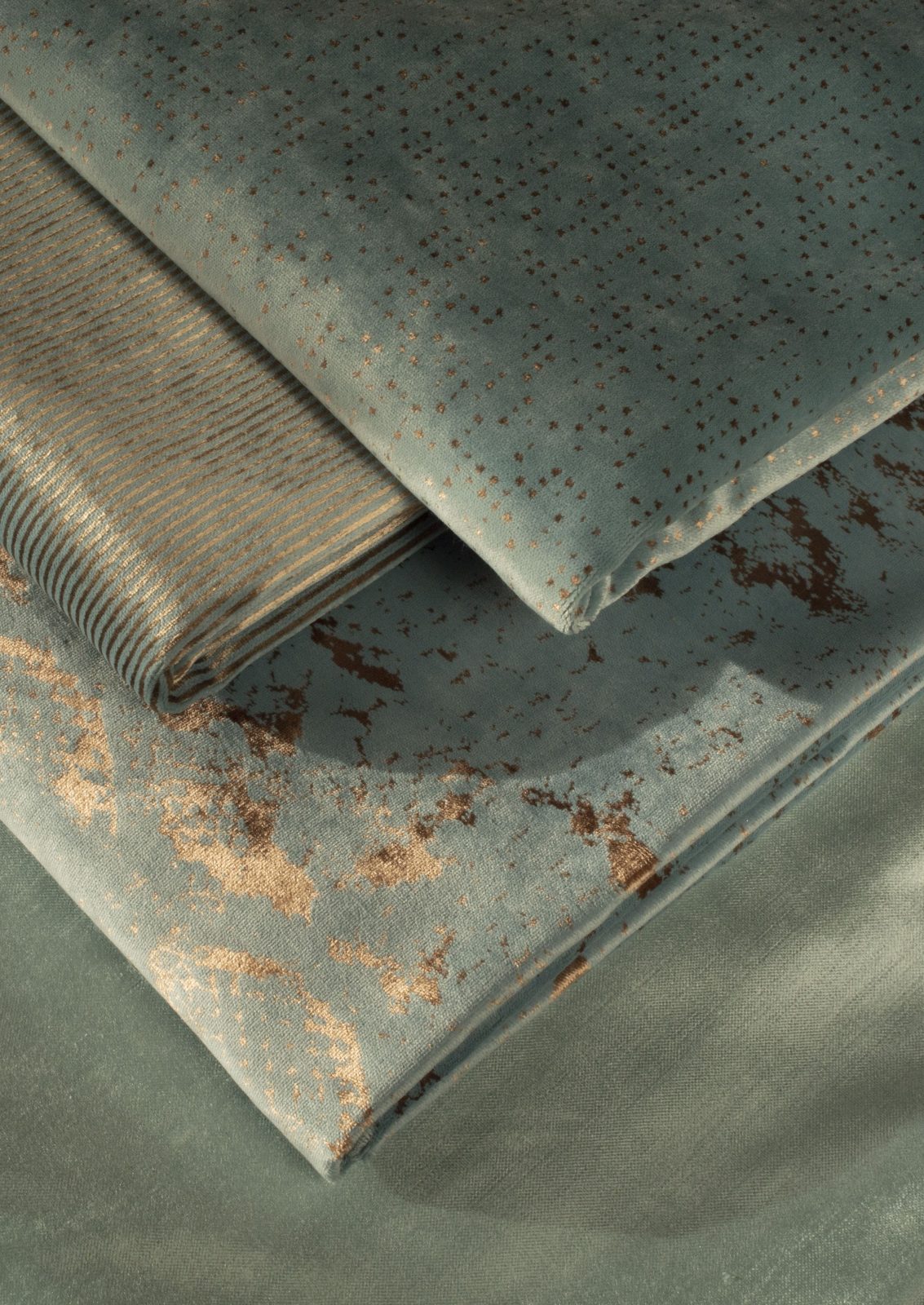
Velvet, very elegant and soft to the touch, can be very different in quality. The most expensive and desirable type has very densely arranged, short threads (the shorter the better) of perfectly equal length. The texture of the fabric may also differ owing to manufacturing techniques. In the uncut velvet, additional threads in the form of loops remain uncut. In cut velvet the pile use cut loops.
In the advertisements of accessories or furniture, names such as velvet, velour, plush and velveteen are often used interchangeably. Although in the common sense they are indeed the same thing, in specialist terminology each of these terms refers to a slightly different type of fabric. The common denominator of all these fabrics is their short, fluffy outer pile and a characteristic production method. They all belong to the category of fabrics cut in the warp, yet it is good to understand these technical complexities and minor differences.
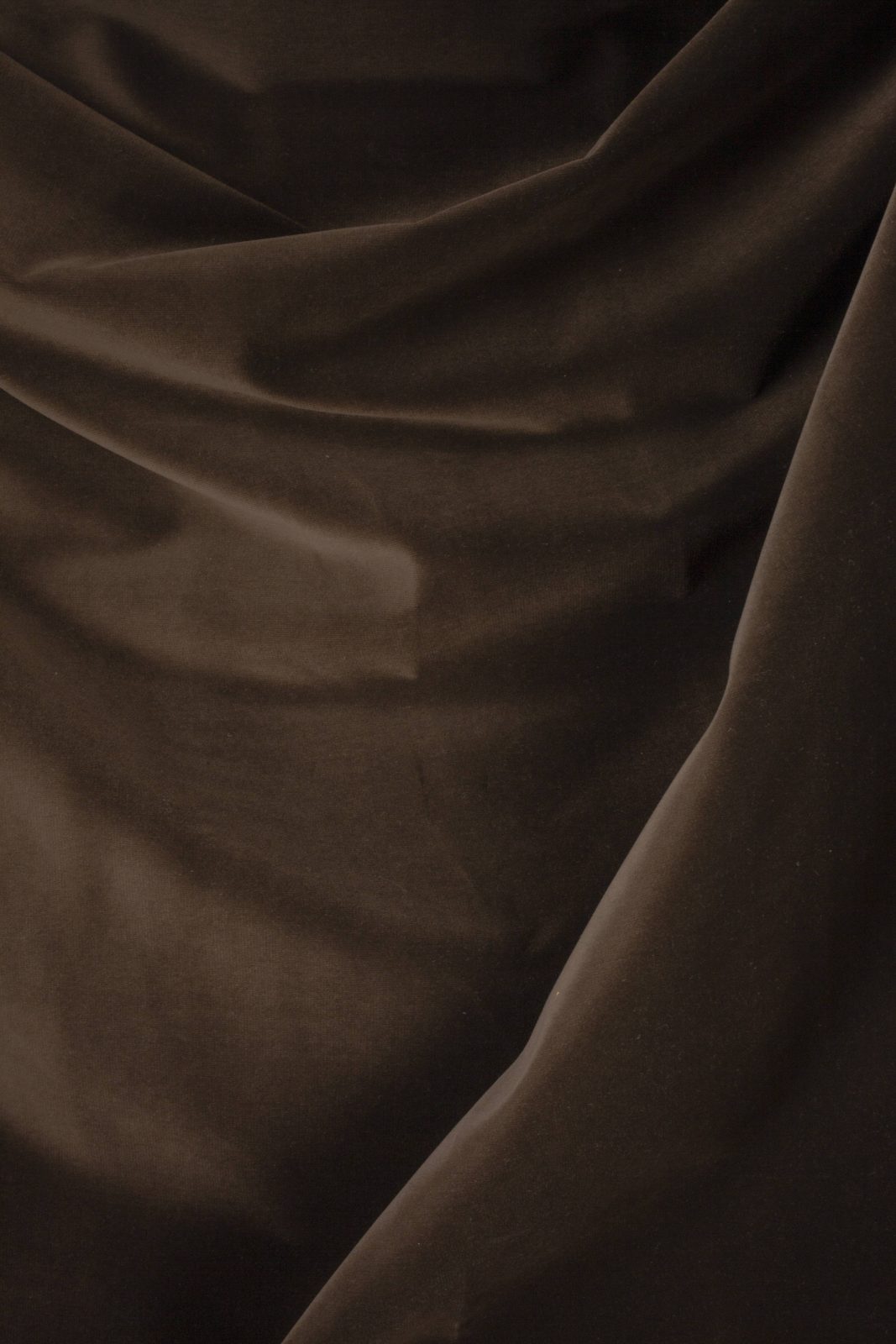
Velour is a kind of thin velvet with very short and usually silk pile. Its nap is made of warp threads.
Velveteen, for a change, is a kind of shiny plush, whose nap is made of cut long interlaces of an additional pile weft. Hence velveteen is the trade name of weft plush. Velveteen has a similar appearance, properties and use to those of velour or velvet, but has a slightly higher pile than the latter.
Since the characteristic feature of velvety fabrics is the “fluff” created by dense “hairs”, a visual shading effect may appear on their surface during use. This happens when the pile fibres are arranged in different directions and is called “pressure marks”. We can also say that velour “crushes”. You can easily deal with it by brushing the fabric on the furniture with your hand or a soft brush.
Soft and free-flowing, not very thick velvets can stretch a bit due to their texture. For this reason, they are more suitable for slightly harder furniture, richly decorated with quilting and stitching.
The product of royal life and complex production.
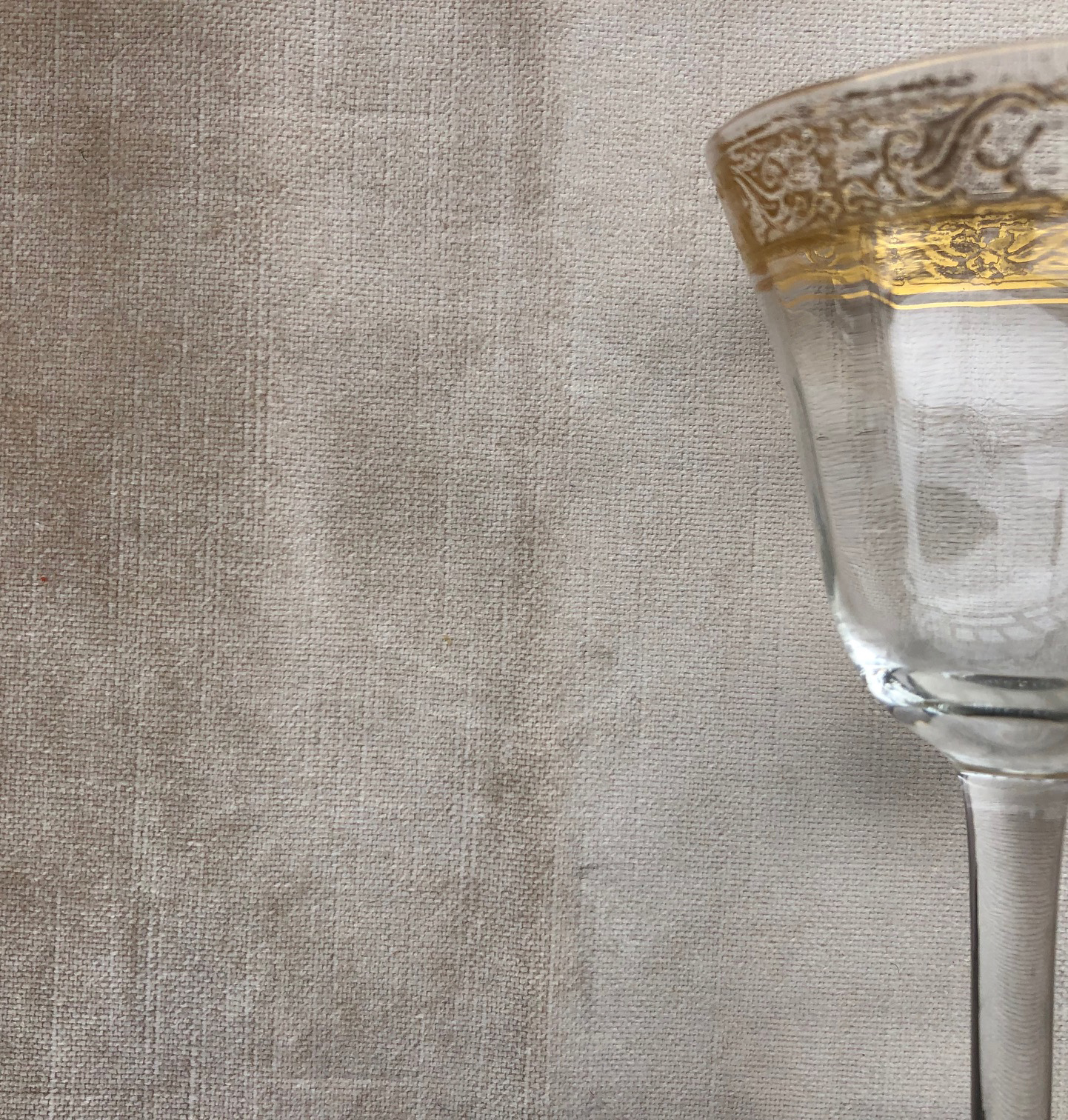
There are several theories about where velvet was invented. Although the fabric is strongly associated with the European nobility, it is most often believed to have come from the Eastern culture, and its popularity in Europe is the result of our fascination with the Far East.
The most common belief is that velvet came to Europe via the Silk Road from India, even though the first records about it come from Egypt and date back to 2000 BC. Yet another source velvet is the Middle East with the most talented velvet weavers in Turkey, Greece and Cyprus.
Apparently, however, the oldest pieces of velvet were found in China, dating back to the period of several old dynasties, including Qin (around 221-206 BC) and Western Han (206 BC-23 AD). These fabrics were woven from silk which in Chinese is referred to as quirongjin or rongquanjin.
In Europe, velvets introduced by Arab merchants have been used since the 12th century. Europeans, who fell in love with soft velvet, imported it using the Silk Road, the ancient network of trade routes that connected East and South-East Asia with East Africa, West Asia and Southern Europe.
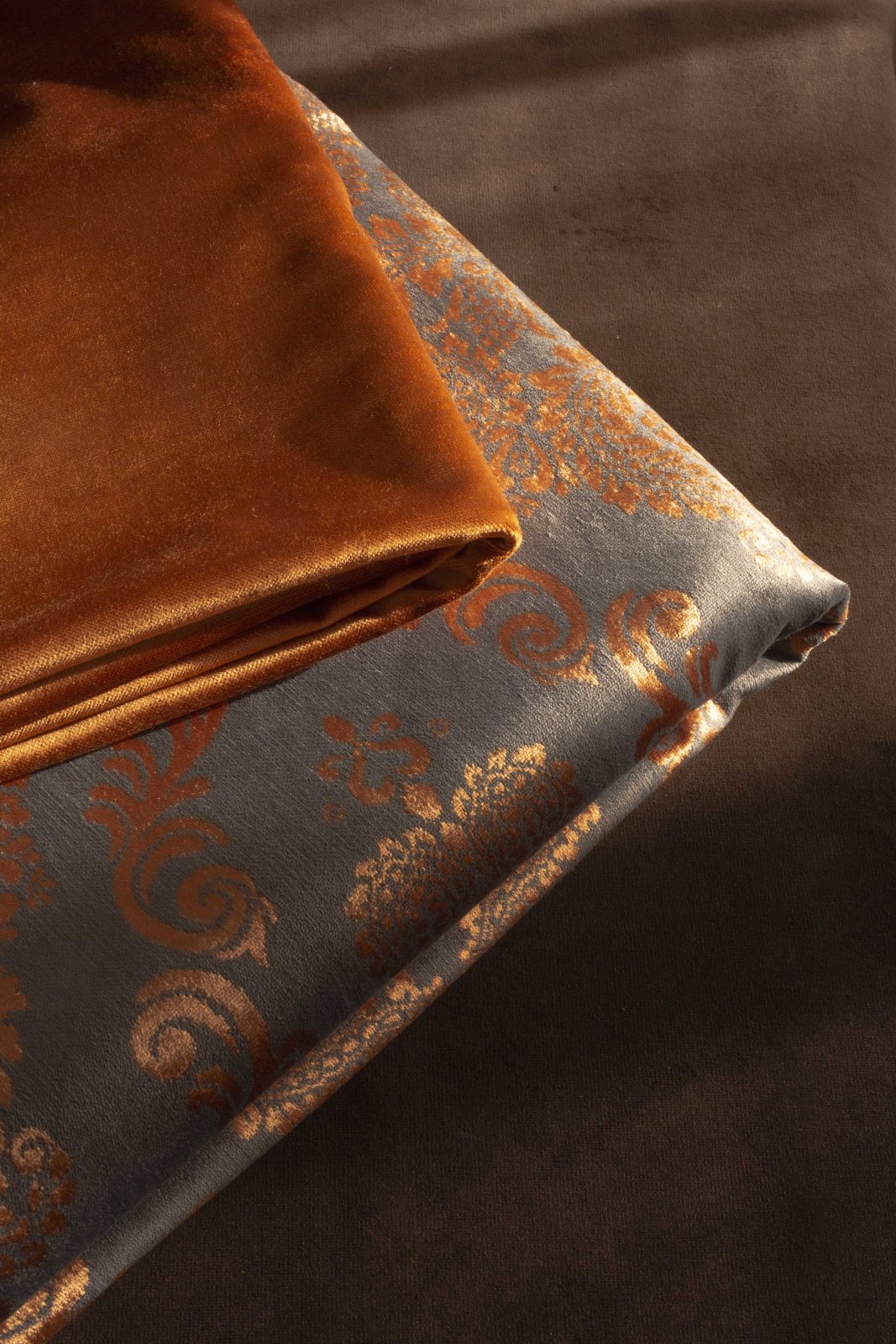
Italy was the first European country to create its own velvet industry, which made many Italian cities famous.
The main centres of European velvet production were initially Genoa and Venice, as well as Amalfi, Lucca and Florence. Each of these great centres of textile production created their own types of decorations based mainly on Persian patterns and most often resembling the design of Persian carpets. The Venetian type was particularly valued, with a very high pile and a convex pattern on a cut background. The pattern was obtained by applying templates to the fabric and cutting the threads that passed through the template openings. The Venetian technique of contrasting the cut background and the convex, fluffy pattern later spread to France, where the first velvet factory was opened in Lyon in 1536. It then became one of Europe’s main weaving centres.
In 1278, velvet made its debut at the court of Medieval England. Rumour has it that Henry VIII, delighted with this luxurious material, had his private toilet covered in velvet.
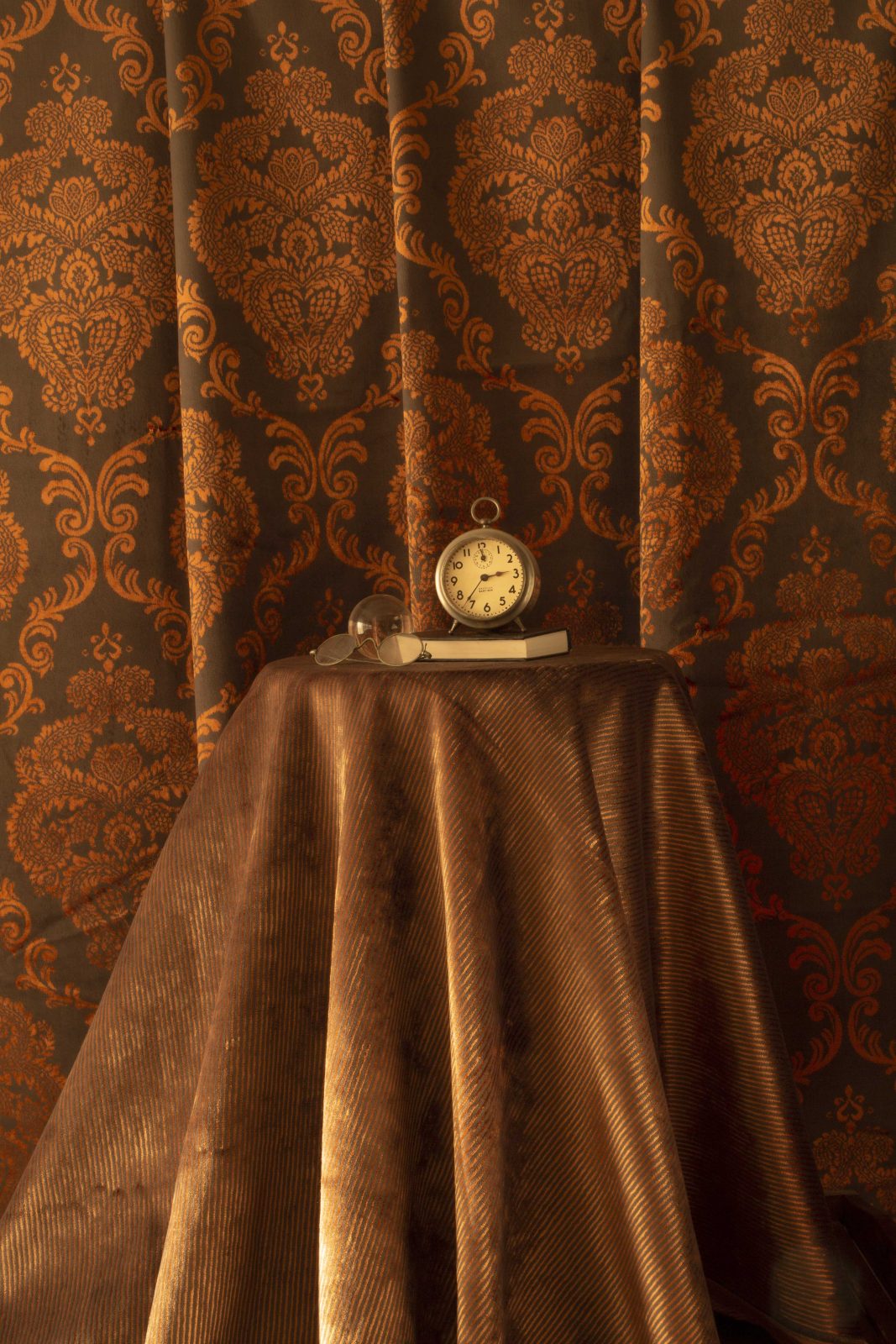
The history of velvet is inextricably linked with that of wealthy families that made fortunes on it, as well as with European monarchies, aristocracy and clergy, who took a liking to robes made of this material, richly decorated banners and decorations of their mansions. Therefore, velvet had been perceived as an extremely noble and luxurious product for centuries.
It was only when new weaving technologies emerged in the late Middle Ages and the Renaissance that velvet prices began to fall, and the fabric itself became slightly more accessible.
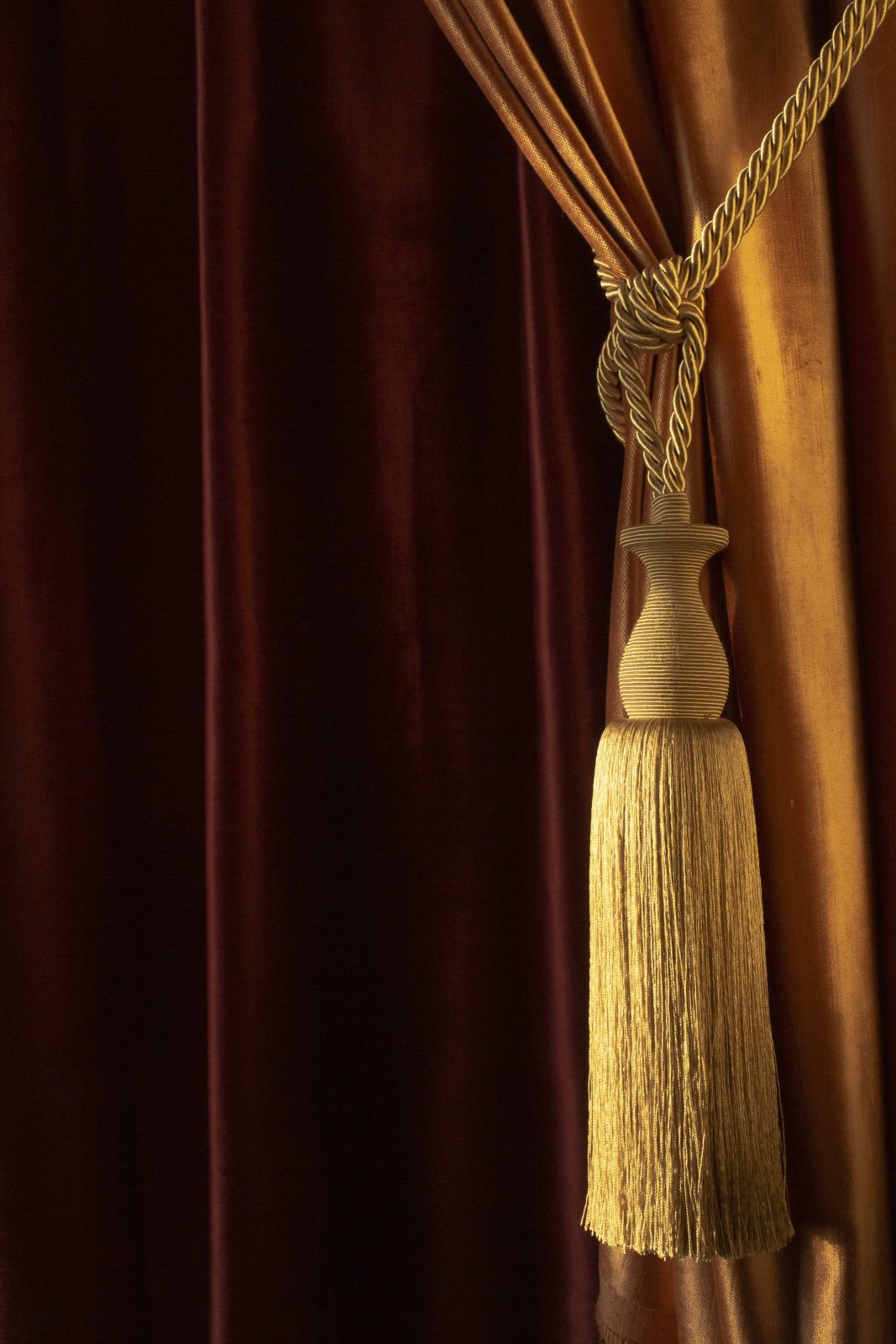
In Poland, velvet production began in the 17th century, although there is evidence that it was known in this country already in the 14th century. According to the treasury records of the court of King Władysław II Jagiełło (Jogaila) from 1393: “… 32 grzywnas (Polish measure of weight), which amounted to about 16 pounds of silver were paid for a piece of velvet, from which the caftan for Grand Duke Vytautas was cut”. According to the same source, “compared to other fabrics, the customs duty on velvet was equal to the duty on samite and higher than on damask and satin”.
In Poland, similar to all of Europe, velour fabrics were initially used to manufacture liturgical vestments and men’s elegant secular garments, dresses, costumes, hats, footwear etc.
The production of various types of velvet entailed numerous applications of the fabrics e.g. as adornments of animals, weapons and armour. They were used to make haberdashery accessories, luxurious items such as chess mats or book covers, sword scabbards, gunpowder boxes etc.
Across the world, velvet was used for various religious purposes: to robe high-ranking people in the church, to make liturgical vestments, as a background for religious performances, and covers of religious books.
There is plenty of evidence in history that velvet was used very early on for upholstery – from tents or foldable floors to wall drapes.
In the Middle Ages, velvets started to be used as upholstery fabrics, as well as decorative fabrics for curtains, cushions, and bedspreads.
In the era of the industrial revolution, difficult, time-consuming and expensive production of velvet was mechanized, making it easier and faster. This previously luxurious fabric, once reserved only for the elite, became cheaper, more accessible and popular.
In the past few years, thanks to the interest in the design of the 1960s and 1970s, velvet has again been widely used in the interior design industry. Currently, the velour trend is so popular that upholstered furniture and accessories made from the fabric were hailed as one of the main interior design trends of 2019.